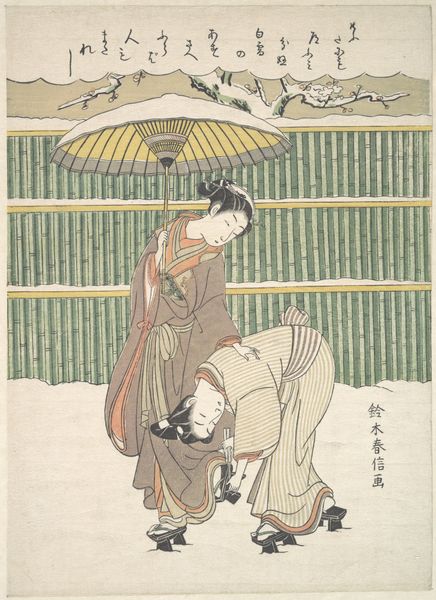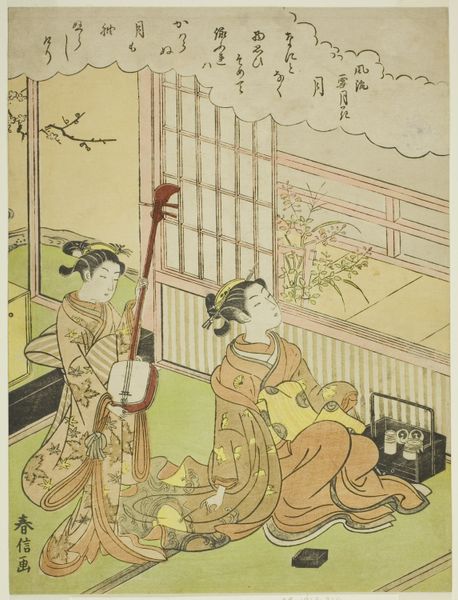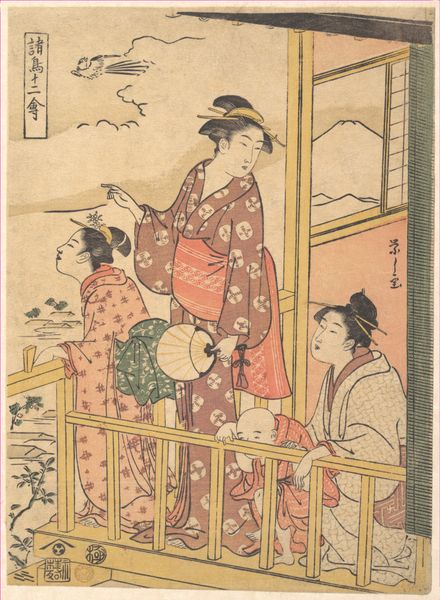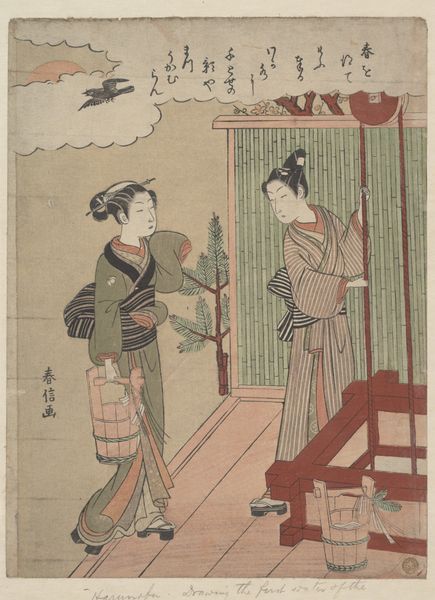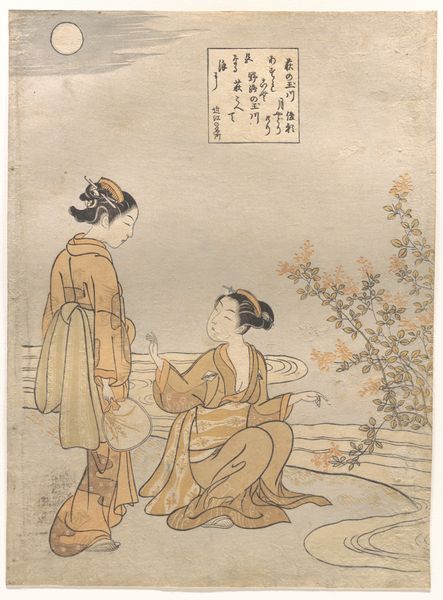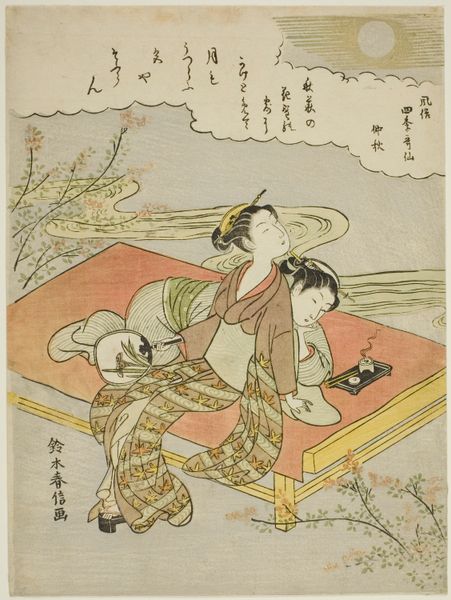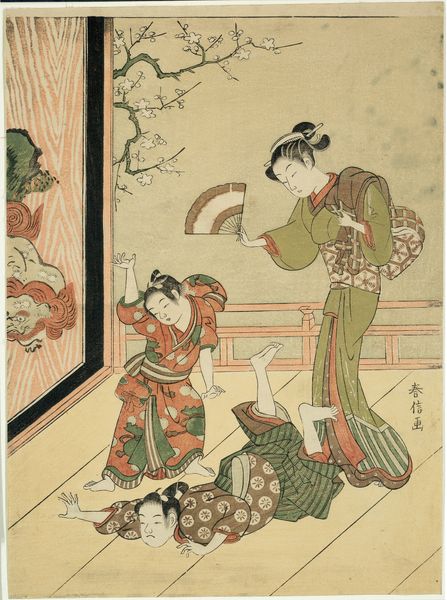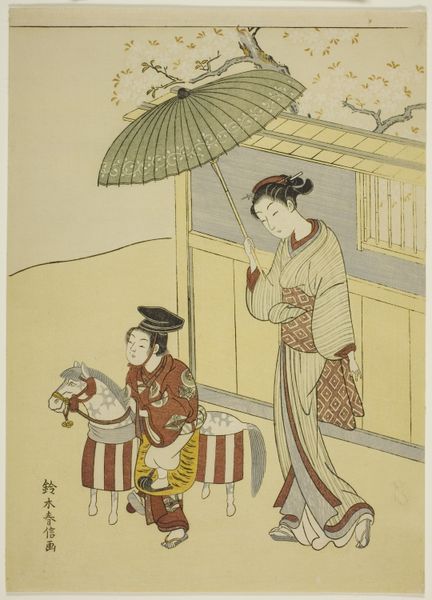
# print
#
asian-art
#
landscape
#
ukiyo-e
#
figuration
#
genre-painting
Dimensions: 11 × 8 3/8 in.
Copyright: Public Domain
Editor: Suzuki Harunobu's "Viewing the Moon," a print from around 1767-1768 at the Art Institute of Chicago, presents such an intimate scene. What strikes me most is the way the composition suggests a private, almost staged moment. What's your take on this piece? Curator: It's interesting you say "staged." Harunobu was indeed working within, and also shaping, a particular visual culture. This print belongs to the *ukiyo-e* tradition, meaning "pictures of the floating world." Think about what "floating world" implies about societal values. How does this differ from the emphasis placed by contemporary European societies? Editor: I see what you mean. Rather than grand historical paintings, this is focused on everyday pleasures, fashion, and idealized beauty. So, how did these prints function in society? Curator: Precisely. These weren't just personal art pieces, they circulated widely. Think of them as advertisements, fashion plates, or celebrity snapshots of their time. How does knowing that influence how we read the women's gestures and the setting itself? Editor: Knowing they are also functioning as aspirational ideals of the floating world adds layers of complexity, especially as related to women's roles and expectations in society. Curator: Exactly. We can discuss how *ukiyo-e* imagery impacts even current artistic outputs. Understanding its purpose adds context. Anything catch your eye after that consideration? Editor: I never thought of *ukiyo-e* prints being popular art with the agency to perpetuate certain standards for social roles! Curator: I agree; contextualizing the imagery helps deepen our understanding and challenge our preconceptions.
Comments
No comments
Be the first to comment and join the conversation on the ultimate creative platform.


